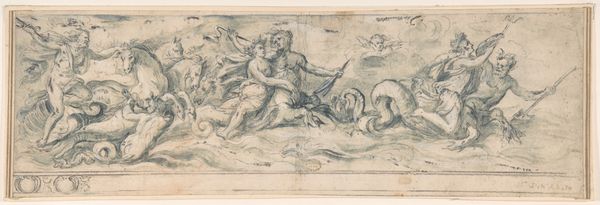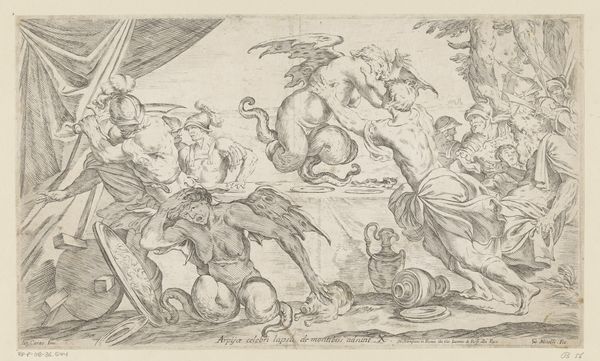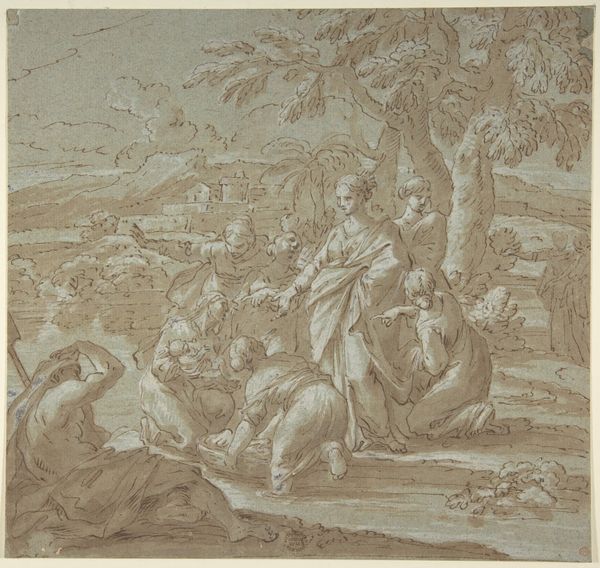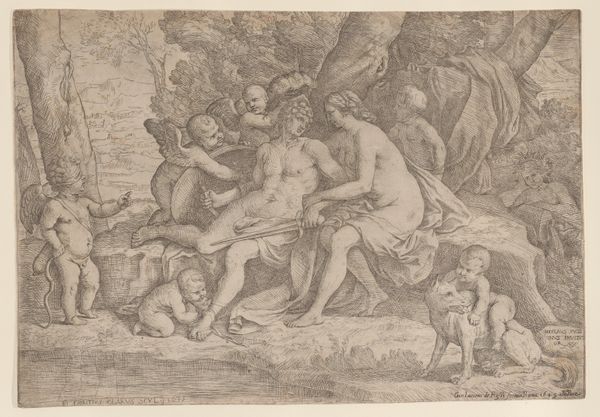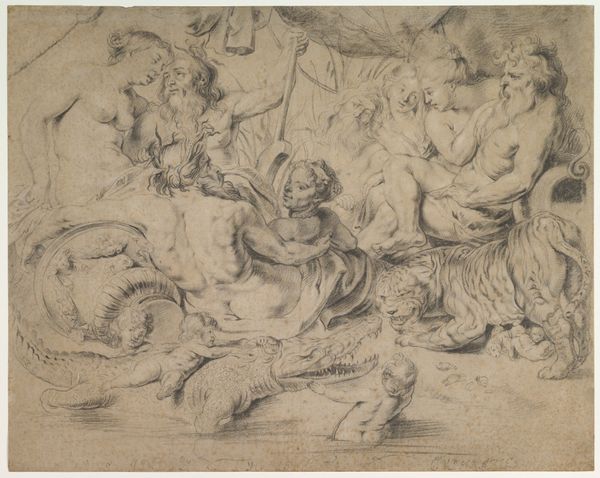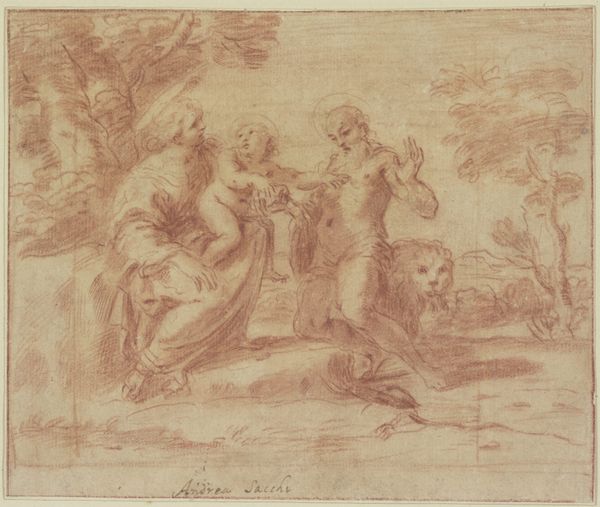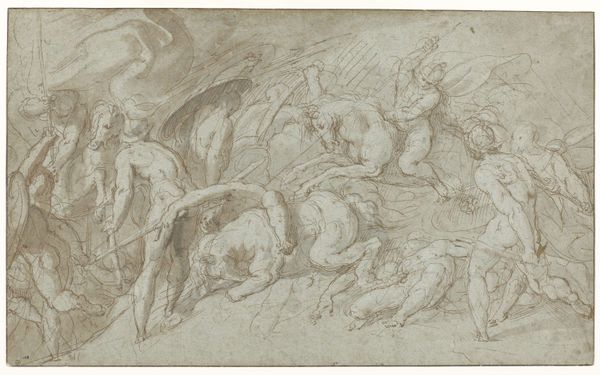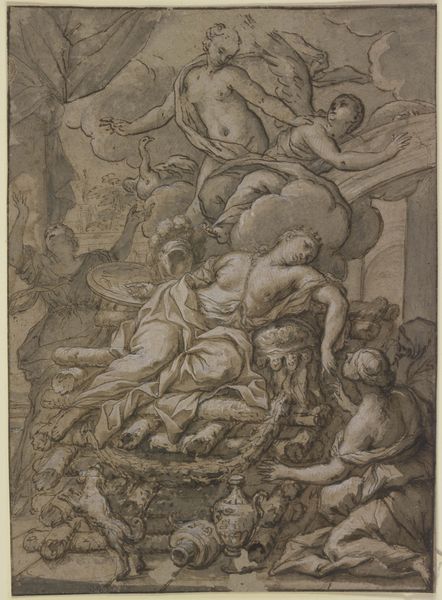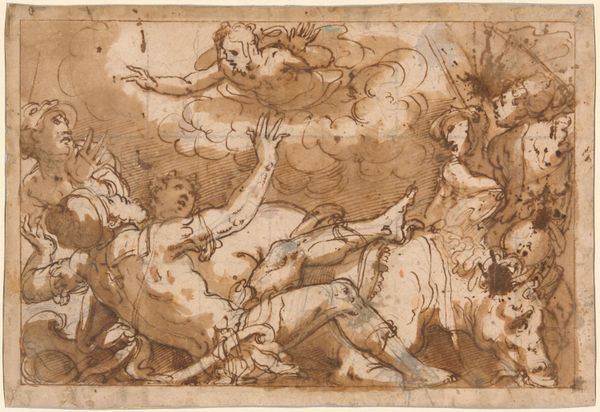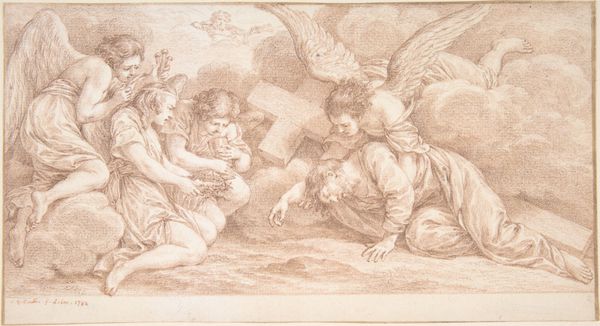
Aurora and Cephalus: Engraver's study after decoration in the Galleria Farnese, Rome. 1600 - 1700
0:00
0:00
drawing, print, engraving
#
drawing
#
allegory
#
baroque
# print
#
landscape
#
figuration
#
engraving
Dimensions: 9-7/16 x 15-1/2 in. (23.9 x 39.4 cm)
Copyright: Public Domain
This print, "Aurora and Cephalus," is by an anonymous artist, and replicates a section of the decoration in Rome’s Galleria Farnese. It’s an engraver’s study, meaning that it was created by carefully incising lines into a metal plate. The image displays the goddess Aurora in her chariot, drawn by a muscular, rearing horse. The dynamism is palpable. Notice the texture of the work, which has a grainy, almost speckled quality. This is a consequence of the engraving process, where small burrs of metal are left on the plate, catching ink and creating a distinctive visual effect when printed. Consider the labor involved in creating such an image. Each line had to be cut with precision, and in reverse, relying on great skill and sustained concentration. It also represents the stratification of the art world in earlier eras, with specialization and the division of labor as the norm. The designer created the composition in the Galleria, and a printmaker reproduced it, making it available for wider consumption. This print is thus more than just an image; it's a testament to the collaborative nature of artistic production, and the skilled handwork that went into it.
Comments
No comments
Be the first to comment and join the conversation on the ultimate creative platform.

